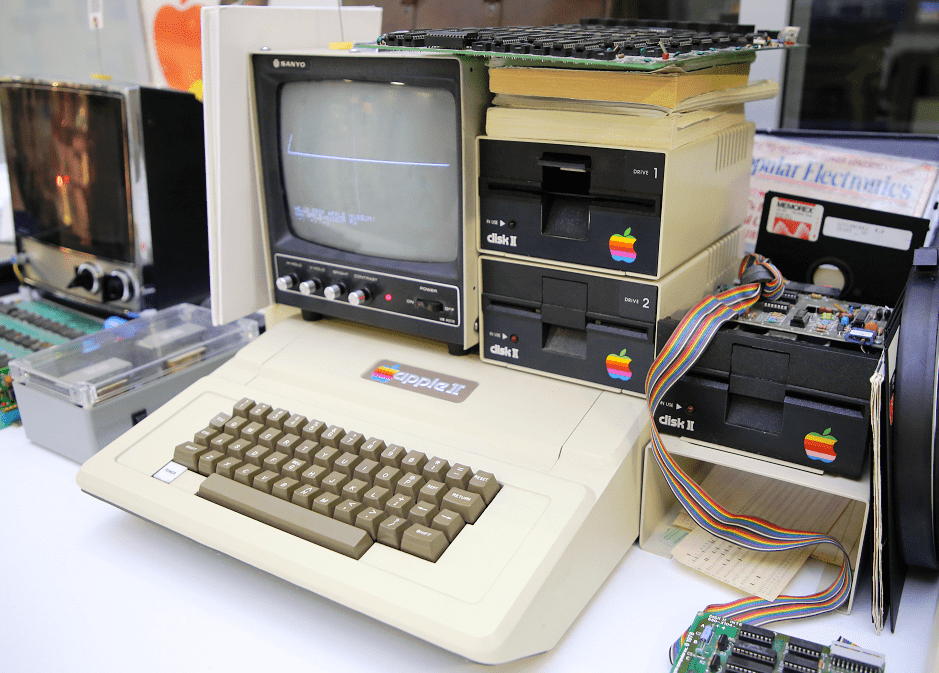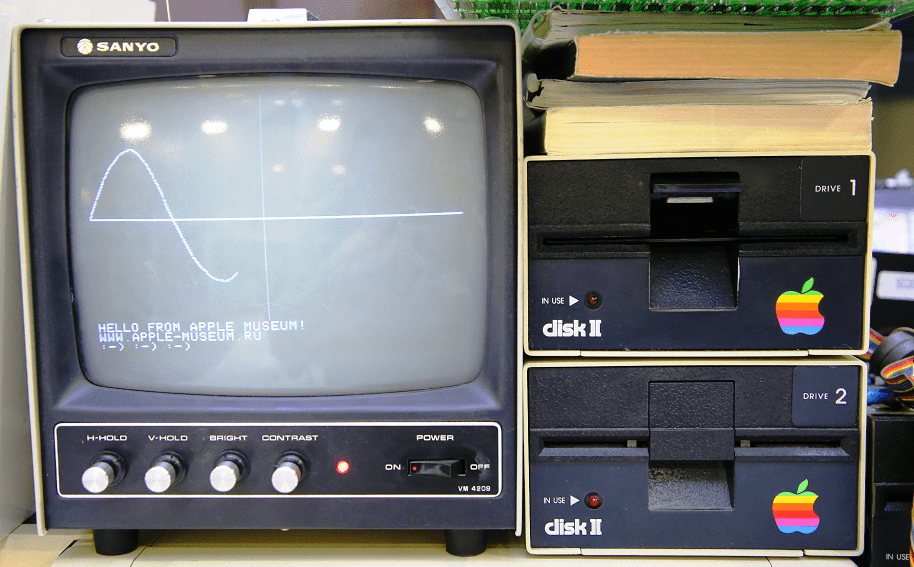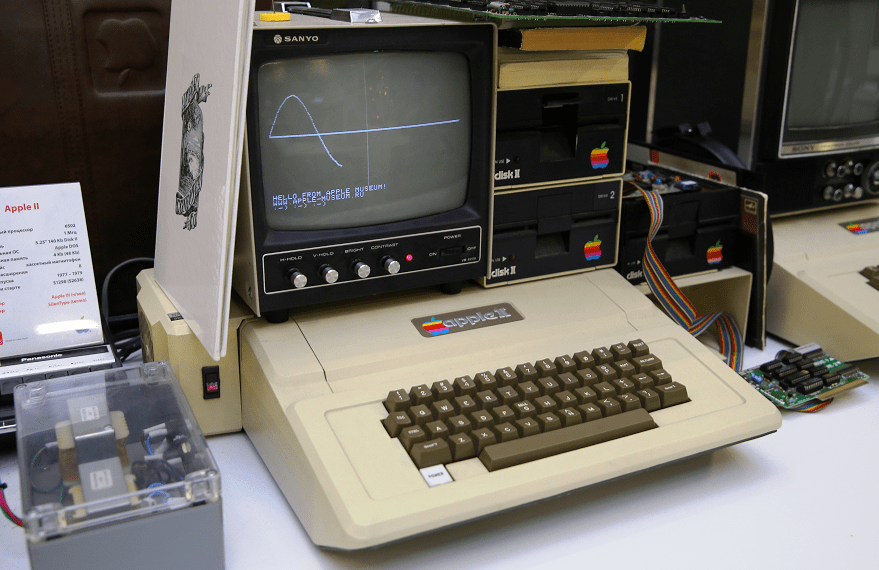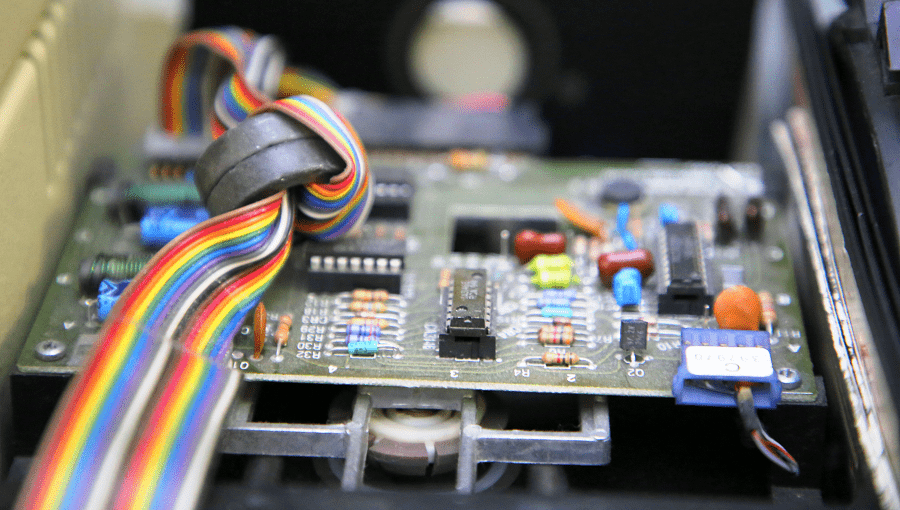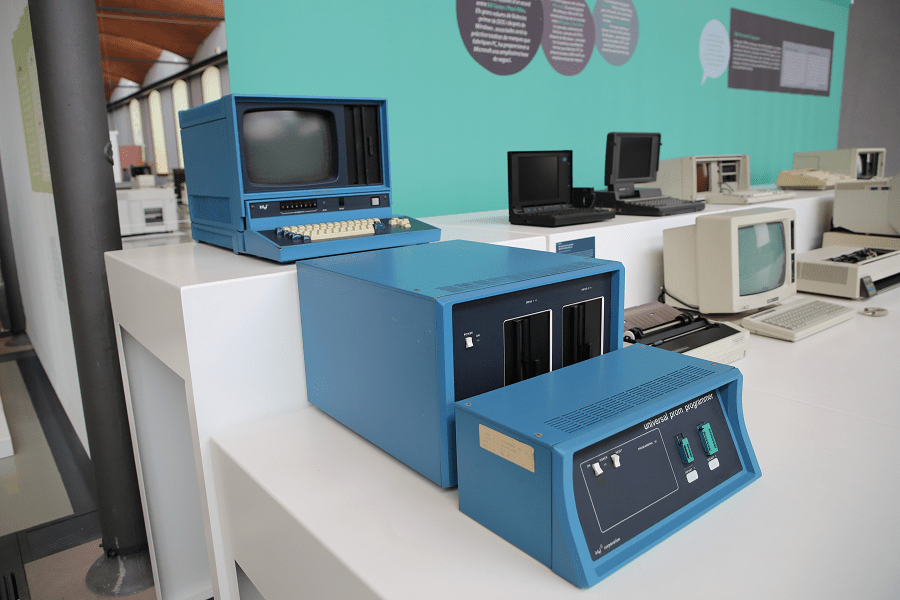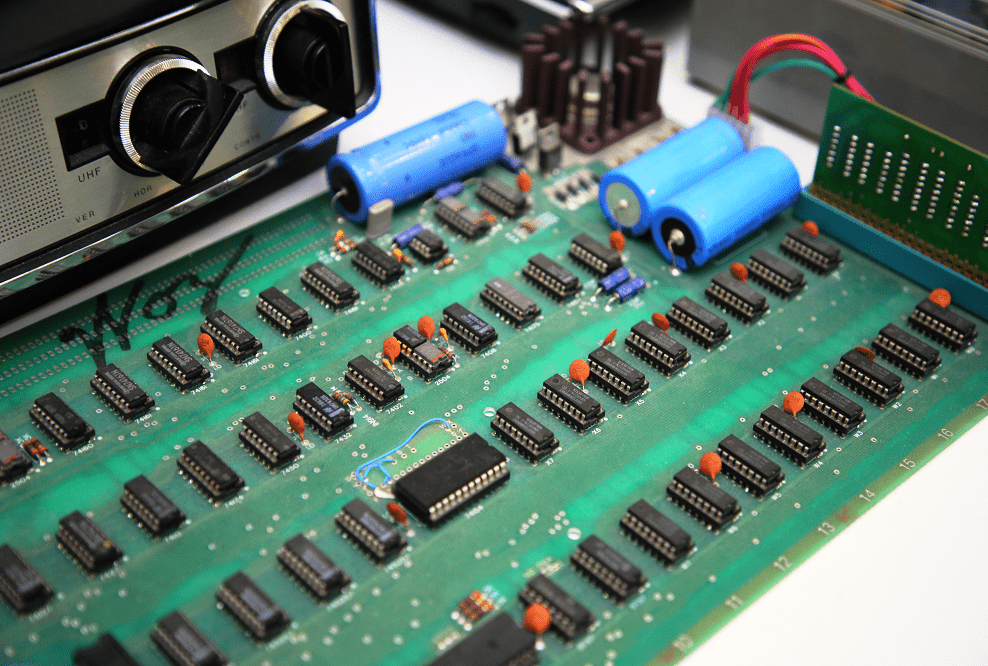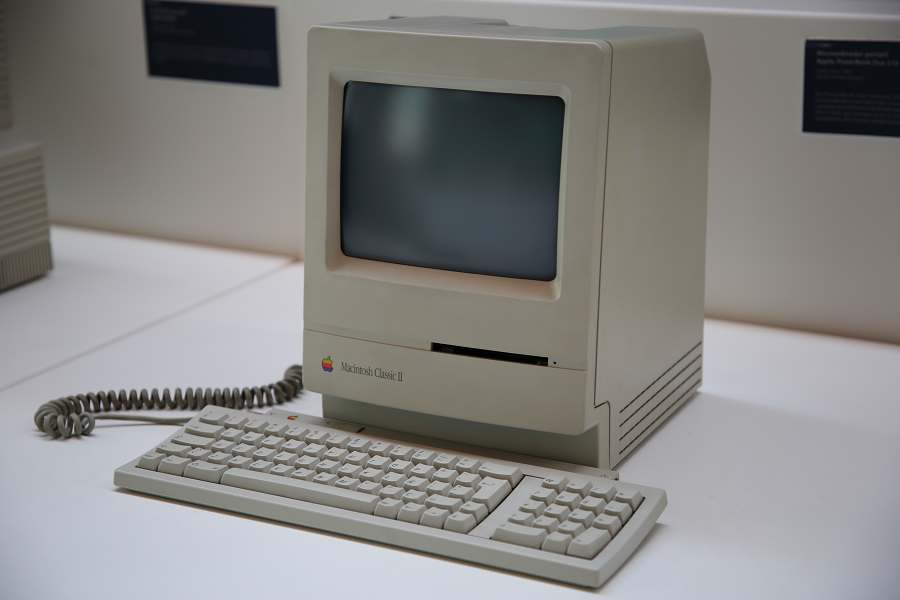The Apple II (Apple ][) is an 8-bit home computer and one of the world’s first highly successful mass-produced microcomputer products.
It was designed primarily by Steve Wozniak; Jerry Manock developed the design of Apple II’s foam-molded plastic case, Rod Holt developed the switching power supply, while Steve Jobs’s role in the design of the computer was limited to overseeing Jerry Manock’s work on the plastic case.
It was introduced by Jobs and Wozniak at the 1977 West Coast Computer Faire, and marks Apple’s first launch of a personal computer aimed at a consumer market—branded toward American households rather than businessmen or computer hobbyists.
The three computers that Byte magazine referred to as the “1977 Trinity” of home computing: Commodore PET 2001, Apple II, and TRS-80 as the “1977 Trinity”. As the Apple II had the defining feature of being able to display color graphics, the Apple logo was redesigned to have a spectrum of colors.
The Apple II is the first model in the Apple II series, followed by Apple II+, Apple IIe, Apple IIc, Apple IIc Plus, and the 16-bit Apple IIGS—all of which remained compatible. Production of the last available model, Apple IIe, ceased in November 1993.
Development: Steve Wozniak
Manufacturer: Apple Computer, Inc.
Years of production: 1977—1979
Price: $1,298 (equivalent to $6,270 in 2022)
Operating system: Integer BASIC / Apple DOS
CPU: MOS Technology 6502 @ 1.023 MHz
Apple museum (Moscow, Russia) and mNACTEC (Tarrassa, Spain)




